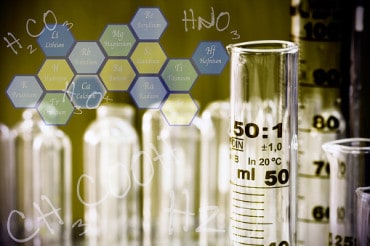
In the news this week: New low code application for creating digital twins, AIOps for Dummies for DevOps and SRE teams, and more.
Keeping pace with news and developments in the real-time analytics market can be a daunting task. We want to help by providing a summary of some of the items our staff came across each week. Here is a short list of some news from this week:
Moogsoft announced the release of “Observability with AIOps For Dummies,” an educational best-practices guide for DevOps and Site Reliability Engineering (SRE) teams to successfully automate observability of complex IT systems and build continuous assurance into their digital services with AIOps. Additionally, the book provides actionable insights for using AIOps for better agility and responsiveness at scale. The eBook is available for download at www.moogsoft.com/dummies. “Observability with AIOps For Dummies” includes:
- A practical explanation of what artificial intelligence (AI) does
- Educational introductions to machine learning and neural network techniques
- An overview of how AIOps helps DevOps and SRE teams.
- Best practices and real-world use cases describing how AIOps streamlines the monitoring of operational data from applications, cloud services, networks, and infrastructure
- Real-world case studies from Moogsoft customers using AIOps across DevOps and SRE teams
Tellius, the Guided Insights platform, announced the availability of Tellius On-Demand, an on-demand SaaS application for business users and analytics teams to quickly understand ‘what’ is driving business performance and uncover the reasons ‘why’ metrics change in their data with machine learning automation. Built from the ground up for dynamic elasticity, Tellius On-Demand lowers the cost of modern, enterprise-grade data analytics as much as 70% compared to legacy analytics and visualization tools. Organizations pay only for what they use and no longer have a barrier to analyzing all their data.
dotData launched dotData Stream, a new containerized AI/ML model that enables real-time predictive capabilities for dotData users. dotData Stream was developed to meet the growing market demand for real-time prediction capabilities for use cases such as fraud detection, automated underwriting, dynamic pricing, industrial IoT, and more. It performs real-time predictions using AI/ML models developed on the dotData Platform, including feature transformation such as one-hot encoding, missing value imputation, data normalization, and outlier filter. It is highly scalable and effective, and its deployment is as easy and simple as launching a docker container with AI/ML models downloaded from the dotData Platform with just one click. dotData Stream can run in cloud MLOps Platforms for enterprise AI/ML orchestration or at the edge servers for intelligent IoT applications.
Aras announced the release of a new application, Digital Twin Core, adding to the set of Aras low-code capabilities for creating and managing digital twins. The Aras Digital Twin Core application provides powerful new functionality for defining the digital twin configuration – the virtual representation of a specific physical asset or unique product instance. This provides the necessary context to interpret and analyze Internet of Things (IoT) sensor data for complicated scenarios such as predictive maintenance, performance optimization, over-the-air software updates, and others.
Imec, a research and innovation hub in nanoelectronics and digital technologies, and GLOBALFOUNDRIES (GF), a specialty foundry, announced a hardware demonstration of a new artificial intelligence chip. Based on imec’s Analog in Memory Computing (AiMC) architecture utilizing GF’s 22FDX solution, the new chip is optimized to perform deep neural network calculations on in-memory computing hardware in the analog domain. Achieving record-high energy efficiency up to 2,900 TOPS/W, the accelerator is a key enabler for inference-on-the-edge for low-power devices. The privacy, security, and latency benefits of this new technology will have an impact on AI applications in a wide range of edge devices, from smart speakers to self-driving vehicles.
cnvrg.io announced a partnership with NetApp, the first to leverage the cnvrg.io dataset caching tool, a set of capabilities for immediate pulling of datasets from cache for any machine learning job. The cnvrg.io ML platform uses dataset caching in end-to-end machine learning development. Caching allows datasets to be ready to use in seconds rather than hours, and cached datasets can be authorized and used by multiple teams in the same compute cluster connected to the cached data. With NetApp and cnvrg.io’s dataset caching capability, users can cache the needed datasets (or their versions) and make sure that they’re located in the ONTAP® AI storage attached to the GPU compute cluster or CPU cluster that is exercising the training. Once the needed datasets are cached, they can be used multiple times by different team members.
Micro Focus announced AI-powered enhancements to the intelligent testing capabilities of the UFT Family, a unified set of solutions designed to reduce the overall complexity of automating the functional testing processes. As businesses place increased emphasis on developing innovative applications that better support users, scaling testing efforts becomes an elusive goal. These new AI-based capabilities ensure application teams can meet growing demands in an effective, efficient, and agile way by increasing test coverage and test asset resiliency and reducing test creation time and maintenance efforts.
Dynatrace announced it has extended its Software Intelligence Platform to provide AI-powered observability into the infrastructure layer of Kubernetes environments to include every container, pod, node, and cluster. This is the latest enhancement to Dynatrace, which already provides automatic distributed tracing and deep code-level insights into applications and microservices running in Kubernetes. With this release, Dynatrace customers can instantly understand the availability, health, and resource utilization of Kubernetes infrastructure. Because Kubernetes is highly dynamic, Dynatrace continuously discovers all infrastructure components, microservices, and interdependencies between entities to create and maintain a precise, real-time topology map. Dynatrace’s AI engine, Davis, uses this map to automatically identify and prioritize anomalies, and as needed, enable automatic remediation.
Automation Anywhere announced expanded integration of IQ Bot with Google Cloud Vision API. Business users can now get improved document processing capabilities with Google Cloud’s Document AI. With the addition of Google Cloud Vision API, organizations in Japan and Korea now can automate document-centric processes across multiple industries, including healthcare, manufacturing, and many more. IQ Bot combines RPA with AI technologies to intelligently extract semi-structured and unstructured data from a variety of complex document types, such as invoices, purchase orders, bill of materials, mill sheets, and medical receipts.
If your company has real-time analytics news, send your announcements to ssalamone@rtinsights.com.
In case you missed it, here are our most recent previous weekly real-time analytics news roundups:






























